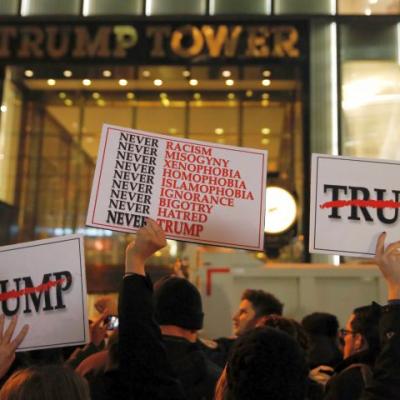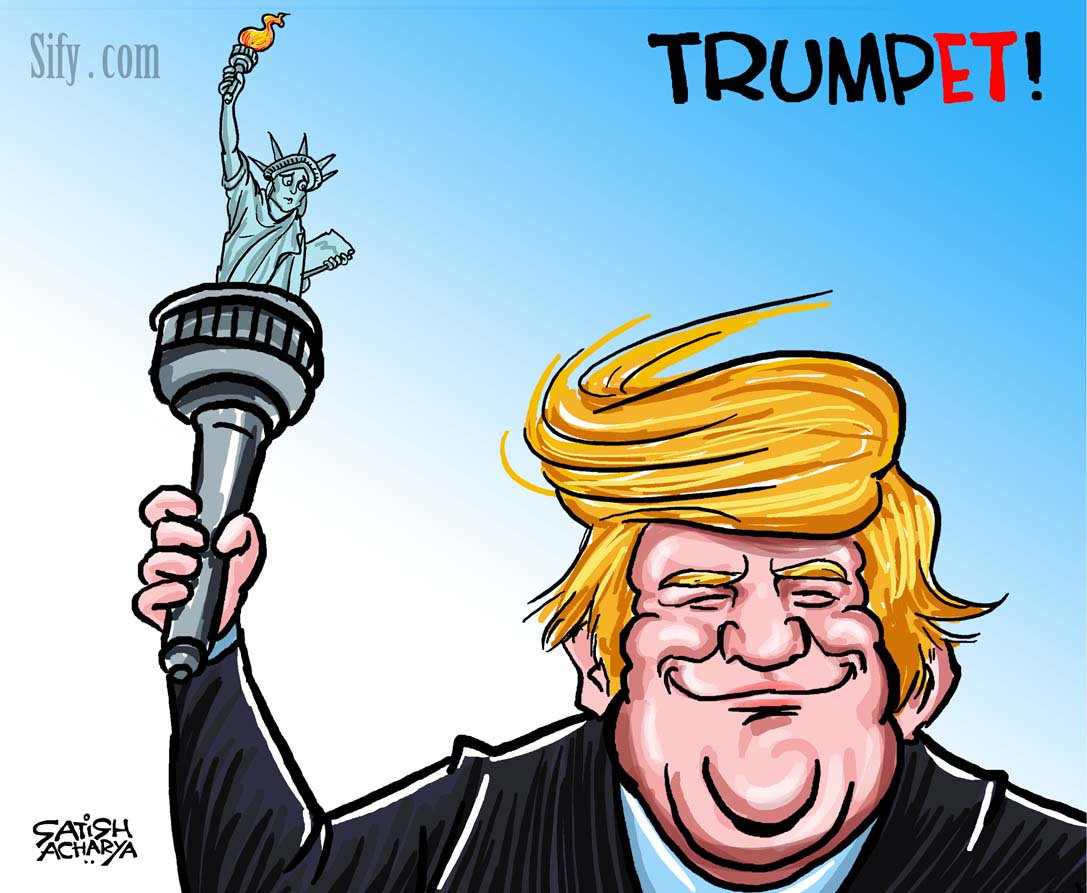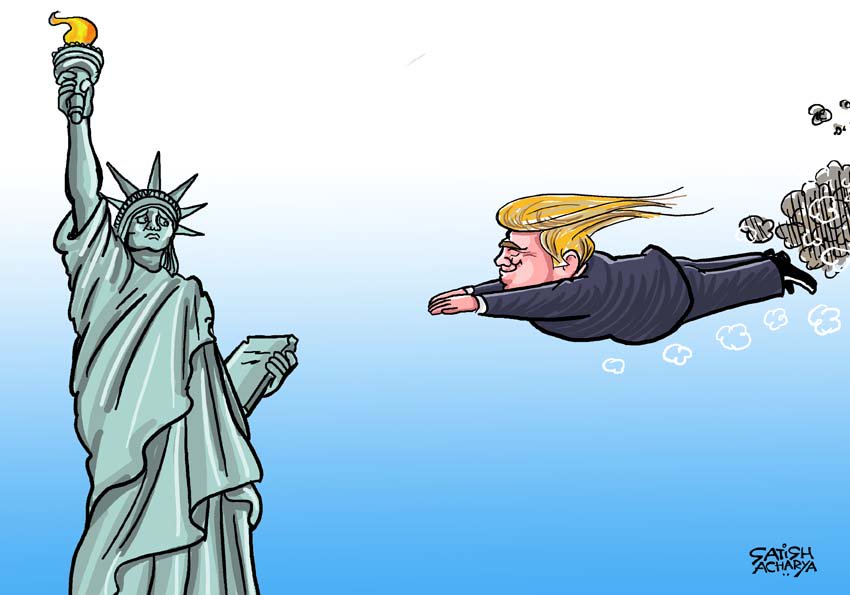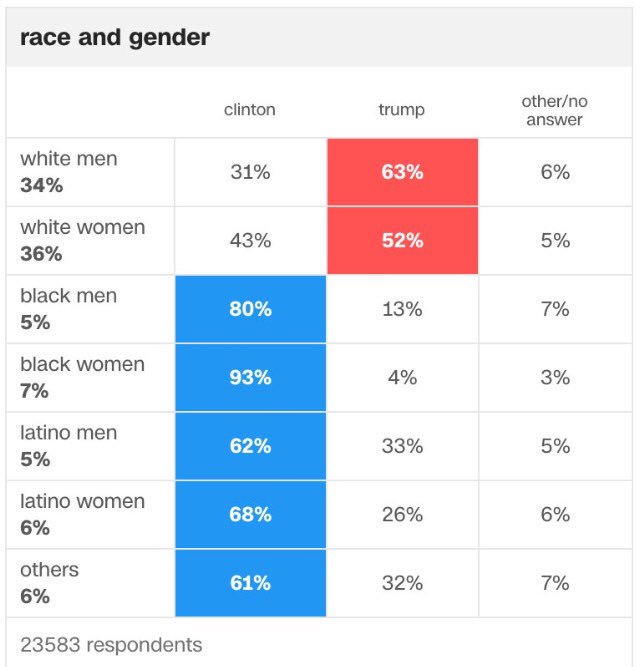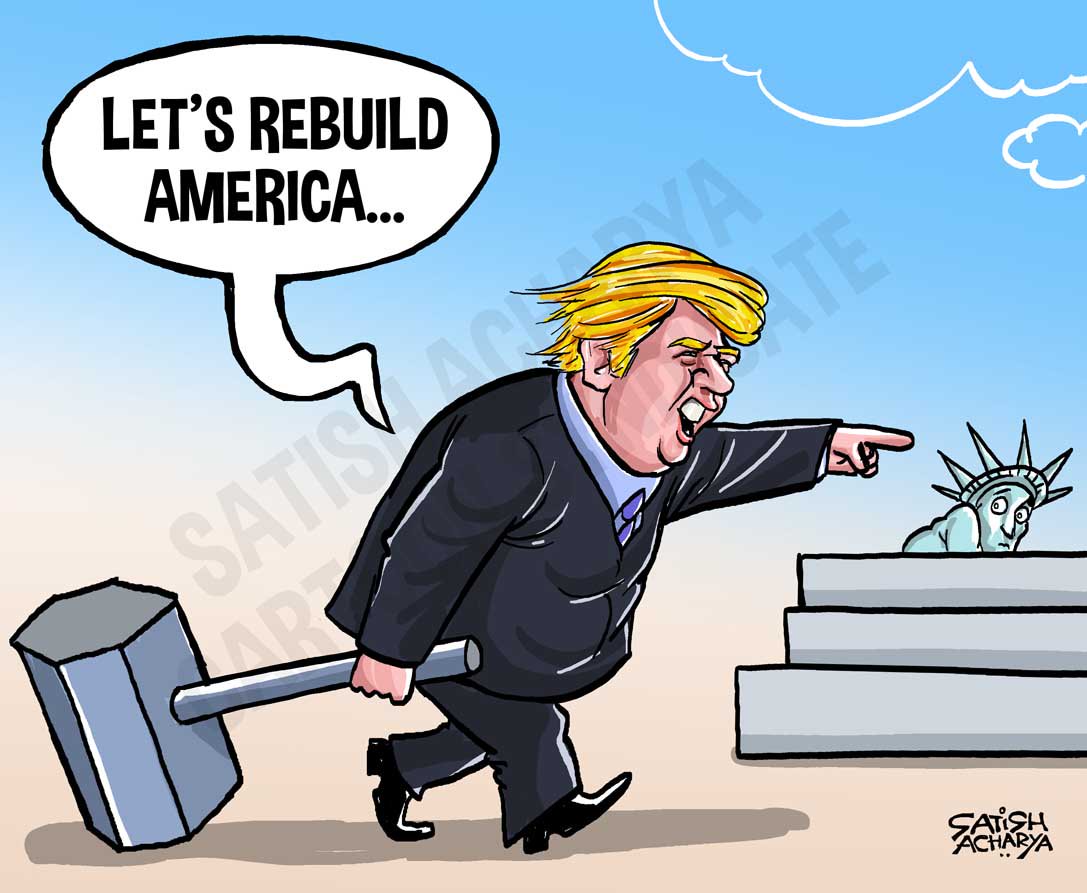What were the economic factors that propelled Donald Trump to the Oval Office? Read this incisive analysis
The Economic Factors Behind the Trump Triumph
By
Nilanjan Banik on
10/11/2016
Slower growth is making people despair and dividing society, something that Trump has exploited well during his campaign.
A number of economic factors have shaped the results of the US presidential election. In short, Donald Trump won because his protectionist strategies were more convincing for the average American.
Data suggest that there are four headwinds: demographics, education, debt and inequality, which are hitting the US economy. Trump won as he took advantage of these factors.
Consider demography. An elderly population means a fall in productivity and real income. The high growth of the US economy during the 1970s and 80s was because of a younger working-age population and women entering the labour force. But now, with the retirement of baby boomers and smaller number of working-age population, US productivity has waned. The elderly population need protection in terms of greater social security, specifically lower medical costs, which is something that Trump promised.
About education, the costs of US college education are higher and there are many dropouts. The college completion rate in the US is around 15 percentage points lower than its neighbour Canada. Higher costs of education (which is also higher than the medical costs) have been reasons for many young Americans to quit education in between, with a negative impact on productivity. This is also responsible for an increase in income inequality. In the US, the growth rate for the bottom 99% of the income distribution is growing slower than the national average. It was easier to convince unemployed Americans that their jobs are taken by the outsiders and it is time to bring those jobs back.
This idea of creating jobs has gained prominence as technological innovations are no longer inclusive. The innovations that happened during the last 150 years were inclusive and these have benefited Americans. Consider this. In travel, the economy graduated from a horse-driven buggy (travelling at 1% the speed of sound) to a Boeing/Airbus (travelling at almost 80% the speed of sound). Electricity and ownership of motor vehicles increased from zero to near 100%. In computing power, present day mobile phone handsets have more computing power than the computer that launched a rocket to the moon. It is projected that within next ten years, the computing power of mobile phones will be more than that of humans. All this was instrumental in improving productivity and real income growth in the US, in a way that no one has ever imagined before. But no longer.
In this age of data algorithms and start-ups, wealth is getting cornered in hands of the select few. And this has called for a more active welfare state. Federal government debt is growing very rapidly: from $5 trillion in 2001 to around $20 trillion at present. The welfare objective is driving this deficit with an increased amount of funds being allocated towards social security (pensions and unemployment benefit) and healthcare programmes. On the contrary, the federal budget allocated for non-transfer payments type spending (primarily geared towards productive investments) are down from 11.5% of GDP in 1966 to 6.5% in 2016.
As productivity is not improving, the US government has no other options but to actively indulge in the distribution of assets, favouring the poor. Monetary policy – either through quantitative easing and/or lowering interest rates – has not been that effective. Policymakers are now venturing for fiscal stimuli such as printing money and transferring them directly into the hands of the poor in an attempt to reduce income inequality. The problem with such an approach is that it is a short-term fix. In a longer time horizon, without inclusive innovation, rising fiscal deficit cannot be sustained.
Lack of productivity and jobless growth are driving many economies across the world to turn protectionist. Trump gained by openly criticising NAFTA and the Trans-Pacific Partnership. His business acumen told him what to do given what has happened in terms of Brexit and results of the French election.
In fact, an important paradigm shift is underway. Over the course of last century, global trade has been growing faster than global GDP (read: income). However, post-2008, this trend is reversing. Presently, world trade is
growing more slowly than world GDP, and this has happened for the third year in a row. Recent estimates by OECD in 2015 indicate trade figures for the G-7 group of countries fell by 7.1% while trade figures for major emerging economies including Brazil, China, India, Indonesia, Russia, and South Africa slumped by 9.5%.
This trend is worrisome. The beneficial effect of trade in increasing productivity and income growth is well known. Economies such as South Korea, Taiwan and much of the South East Asian nations catapulted to a higher growth trajectory through trade. In fact, as evidence from China suggests trade has been instrumental in lifting millions out of poverty.
Global trade is slowing down primarily because of lack of productivity growth in the US and in Europe. These two regions account for more than half of world trade volumes, and a slowdown in these regions will naturally have an impact on global trade. With an economic slowdown there will be a concomitant fall in investment across national boundaries, which means lower trade.
A slower intra-industry trade, particularly, those associated with the international fragmentation of production. A fall in investment flow negatively affects trade in similar in commodities such as cars, computers, air conditioners and refrigerators. In event of slower trade growth, individual countries turn protectionist. Protectionism is becoming evident in terms of an increase in applied tariffs (although keeping them below the rates countries bound at WTO) and non-tariff barriers, mainly in the form of anti-dumping measures, sanitary and phytosanitary sanctions, and even through the provisions granting subsidies to domestic producers.
We are jinxed: protectionism is leading to slower trade which in turn is leading to slower growth. Slower growth is making people despair and dividing society, something that Trump has exploited well during his campaign.
Nilanjan Banik is a professor at Bennett University. He can be reached at nilbanik@gmail.com.
http://thewire.in/79050/economic-factors-behind-us-presidential-election/
